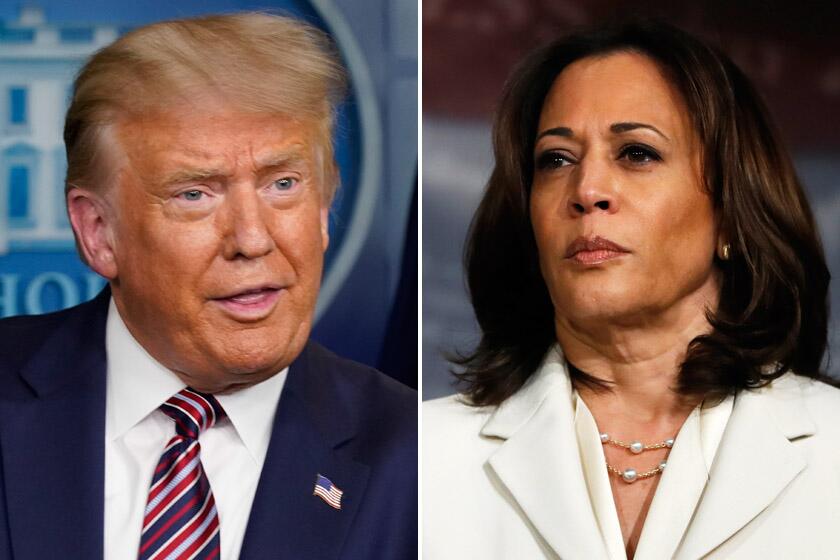Virgin America will disappear into Alaska Airlines in 2019
- Share via
Virgin America, the California-based carrier with the blue mood lighting and high-tech entertainment system, will be fully absorbed by Alaska Airlines by the end of 2019 as Alaska strives to become the West Coast’s dominant airline.
Only three months after Alaska Airlines’ parent company completed the $2.6-billion acquisition of the popular upstart airline launched by billionaire Richard Branson, Alaska Air Group says it will retire the Virgin America brand.
Since the purchase, Alaska Air Group has operated the two carriers as separate subsidiary airlines, with the ultimate goal of combining their forces to compete against bigger air rivals.
“We are going to be able to create a real, strong, integrated airline for travelers on the West Coast,” said Andrew Harrison, chief commercial officer for Alaska Airlines.
With Alaska Airlines based in Seattle and Virgin America headquartered in Burlingame, the combined operation has a fleet of 286 planes, flying to 118 destination. The carriers employ 19,000 people.
Combined, the airlines represent the nation’s fifth-largest carrier, behind American, Delta, United and Southwest airlines.
Even though Virgin America will cease operations in 2019, Alaska Airlines plans to incorporate many of Virgin America’s most popular features.
Starting next year, Alaska Airlines will redesign its cabin to include new seats and, in some planes, Virgin America’s distinctive blue lighting. Alaska Airlines’ staff will also don new uniforms created by Seattle fashion designer Luly Yang.
Alaska Airlines also plans to make permanent a temporary promotion that gives passengers free access to more than 200 movies and TV shows. (Virgin America is known for its touch-screen entertainment system.)
“The vibe that Virgin created on board is fantastic, and we want to bring it to Alaska,” said Sangita Woerner, Alaska Airlines’ vice president of marketing.
Since launching in 2007, Virgin America has developed a devoted following and won several consumer awards from Conde Nast Traveler and Travel & Leisure magazines. It has focused on young, hip business travelers, flying between Los Angeles and San Francisco, as well as from the West Coast to New York and Washington, D.C.
But the carrier struggled to make money through the recession and the years that followed. It didn’t report its first profitable year until 2014. Despite Virgin America’s popularity, most industry experts agreed that it makes financial sense for Alaska Air Group to combine the two airlines as one operation.
Henry Harteveldt, an airline industry analyst with Atmosphere Research Group, said Alaska’s decision wasn’t a surprise because it will enable the company to create a more convenient flight schedule, reaching more destinations and becoming a formidable opponent to the bigger carriers.
“I think Alaska will be very able to fight at or above its weight,” Harteveldt said.
Still, he expects that the carrier won’t be able to hold on to all of the customers who favored Virgin America.
“Alaska and Virgin are two very different brands and very different cultures,” he said.
Alaska Airlines had been known as a blue-collar airline with reliable service. But with the acquisition of Virgin America, the carrier said it is now expanding the number or first-class and premium-class seats by 50%, beginning at the end of 2018.
Woerner said Alaska will still target fliers looking for affordable fares and reliable service but will also try to draw in a group called “leisure enthusiasts,” travelers with a higher income who are looking for a “premium travel experience.”
The new carrier faces its strongest competition on the West Coast from Dallas-based Southwest Airlines, which is the dominant airline in mid-size California airports such as Hollywood Burbank Airport and Oakland International Airport.
Some questions about the future of the airline remain unanswered.
For example, Alaska Airlines operates a fleet of Boeing planes while Virgin America flies Airbus planes. This means Alaska Airlines must pay for two sets of mechanics and maintenance facilities.
Harrison said he isn’t sure if Alaska Airlines will continue to lease or buy both types of planes or will slowly ween the carrier away from the Airbus fleet.
Also, there is a slim chance that Virgin America may live on in the form of another airline.
Alaska Airlines has been paying a licensing fee to Branson’s Virgin Group for the name Virgin America. Branson told reporters last year that he might consider relaunching Virgin America if Alaska Airlines decides to retire the brand.
“I hope the Virgin America brand never goes away,” Branson told radio station WFAA at an event in October in Dallas. “If Alaska decides to drop the brand — because we didn’t actually want the sale to happen — we’ll start again and Virgin America will very much back here.”
Harrison said creating a new airline in the U.S. would be difficult.
“Basically, the U.S. infrastructure is at capacity,” he said. “Even if someone wanted to start a new airline, you’re going to have a great difficulty surviving the mass market.”
To read more about the travel and tourism industries, follow @hugomartin on Twitter.
More to Read
Inside the business of entertainment
The Wide Shot brings you news, analysis and insights on everything from streaming wars to production — and what it all means for the future.
You may occasionally receive promotional content from the Los Angeles Times.











